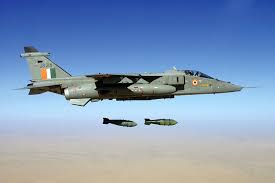SEPECAT Jaguar:

The SEPECAT Jaguar aircraft of the Indian Air Force (IAF) crashed near Churu in Rajasthan.
- The SEPECAT Jaguar, fondly called ‘Shamsher’ (Sword of Justice), was a joint venture between the British Aircraft Corporation and the French Breguet Company (now part of Dassault).
- First introduced in 1968, it is a twin-engine, ground-attack aircraft primarily designed for deep penetration strike missions, especially against high-value ground targets in contested airspace.
- It can carry up to 4,500 kg of payload.
- The Jaguar can fly at a maximum speed of 1,699 km/h.
- It can fly 850 km on its internal fuel tanks, and with an external drop tank, the combat range is increased to 1400 km.
- It has a max service ceiling of 46,000 ft.
- The Jaguar is of monoplane design with an aluminium airframe.
- The aircraft is equipped with an in-flight refuelling probe at the starboard side of the front fuselage to execute air refuelling missions even under the worst weather conditions.
- It is equipped with spoilers, air brakes, rudder, double-slotted flaps, slats, critical systems, and a bulletproof windscreen.
- It features an all-digital cockpit enclosed within a glass canopy. The cockpit is equipped with a head-up display, multifunctional display, night vision, and GPS.
- India’s Jaguar Fleet of 40 Jaguars was inducted into the IAF in fly-away condition beginning in 1979 and delivered in 1981.
- Another 100 were license-built by Hindustan Aeronautics Limited (HAL) in 2008.
- Overall, the IAF has inducted about 160 Jaguars of different variants over the years.
- These include the single-seat strike fighter Jaguar IS, the two-seat trainer Jaguar IB, and the naval version Jaguar IM.
- The IAF is the world’s only air force still flying these low-flying fighter bombers. Today, the IAF operates approximately 120 Jaguar jets in six squadrons.




